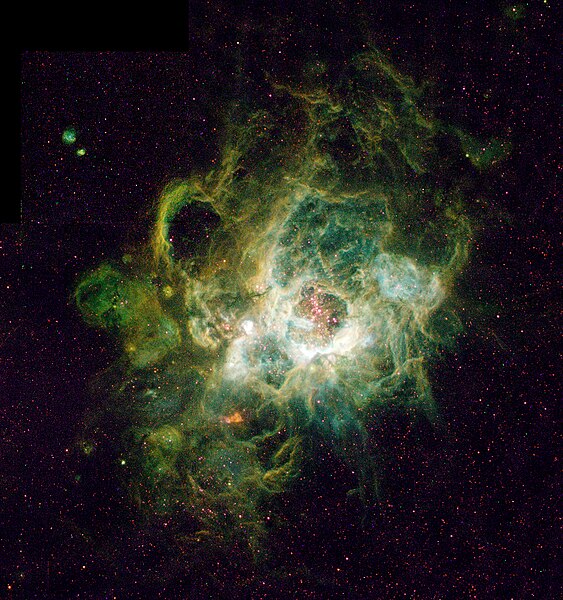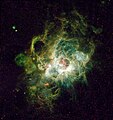Fișier:Nursery of New Stars - GPN-2000-000972.jpg

Mărimea acestei previzualizări: 563 × 600 pixeli. Alte rezoluții: 225 × 240 pixeli | 450 × 480 pixeli | 721 × 768 pixeli | 1.127 × 1.201 pixeli.
Mărește rezoluția imaginii (1.127 × 1.201 pixeli, mărime fișier: 2,42 MB, tip MIME: image/jpeg)
Istoricul fișierului
Apăsați pe Data și ora pentru a vedea versiunea trimisă atunci.
| Data și ora | Miniatură | Dimensiuni | Utilizator | Comentariu | |
|---|---|---|---|---|---|
| actuală | 8 august 2019 21:12 |  | 1.127x1.201 (2,42 MB) | BevinKacon | Reverted to version as of 01:11, 9 April 2009 (UTC) bad upscale by new user |
| 3 august 2019 16:38 |  | 1.690x1.800 (2,84 MB) | Armin3636 | بالا بردن کیفیت | |
| 29 iulie 2019 15:08 |  | 1.024x1.091 (1,21 MB) | Armin3636 | بارگذاری کامل پرونده | |
| 9 aprilie 2009 04:11 |  | 1.127x1.201 (2,42 MB) | BotMultichillT | {{Information |Description={{en|1=This is a Hubble Space Telescope image (right) of a vast nebula called NGC 604, which lies in the neighboring spiral galaxy M33, located 2.7 million light-years away in the constellation Triangulum. This is a site where |
Utilizarea fișierului
Următoarele pagini conțin această imagine:
Utilizarea globală a fișierului
Următoarele alte proiecte wiki folosesc acest fișier:
- Utilizare la af.wikipedia.org
- Utilizare la anp.wikipedia.org
- Utilizare la an.wikipedia.org
- Utilizare la ar.wikipedia.org
- Utilizare la arz.wikipedia.org
- Utilizare la ast.wikipedia.org
- Utilizare la az.wikipedia.org
- Utilizare la ba.wikipedia.org
- Utilizare la be.wikipedia.org
- Utilizare la bg.wikipedia.org
- Utilizare la bn.wikipedia.org
- Utilizare la bs.wikipedia.org
- Utilizare la ca.wikipedia.org
- Utilizare la ceb.wikipedia.org
- Utilizare la ce.wikipedia.org
- Utilizare la cs.wikipedia.org
- Utilizare la da.wikipedia.org
- Utilizare la de.wikipedia.org
- Utilizare la de.wikibooks.org
- Utilizare la diq.wikipedia.org
- Utilizare la el.wikipedia.org
Vizualizați utilizările globale ale acestui fișier.

